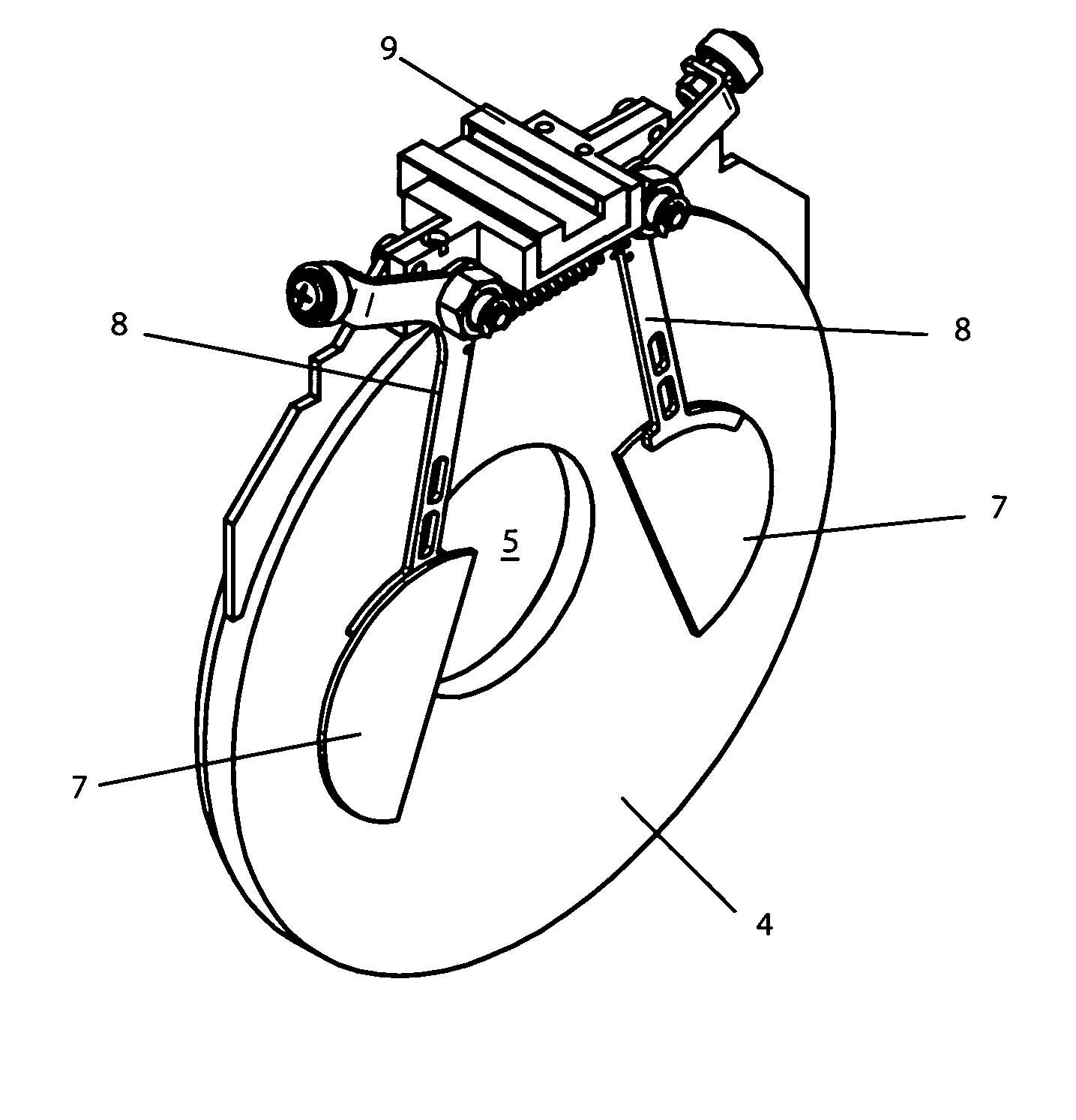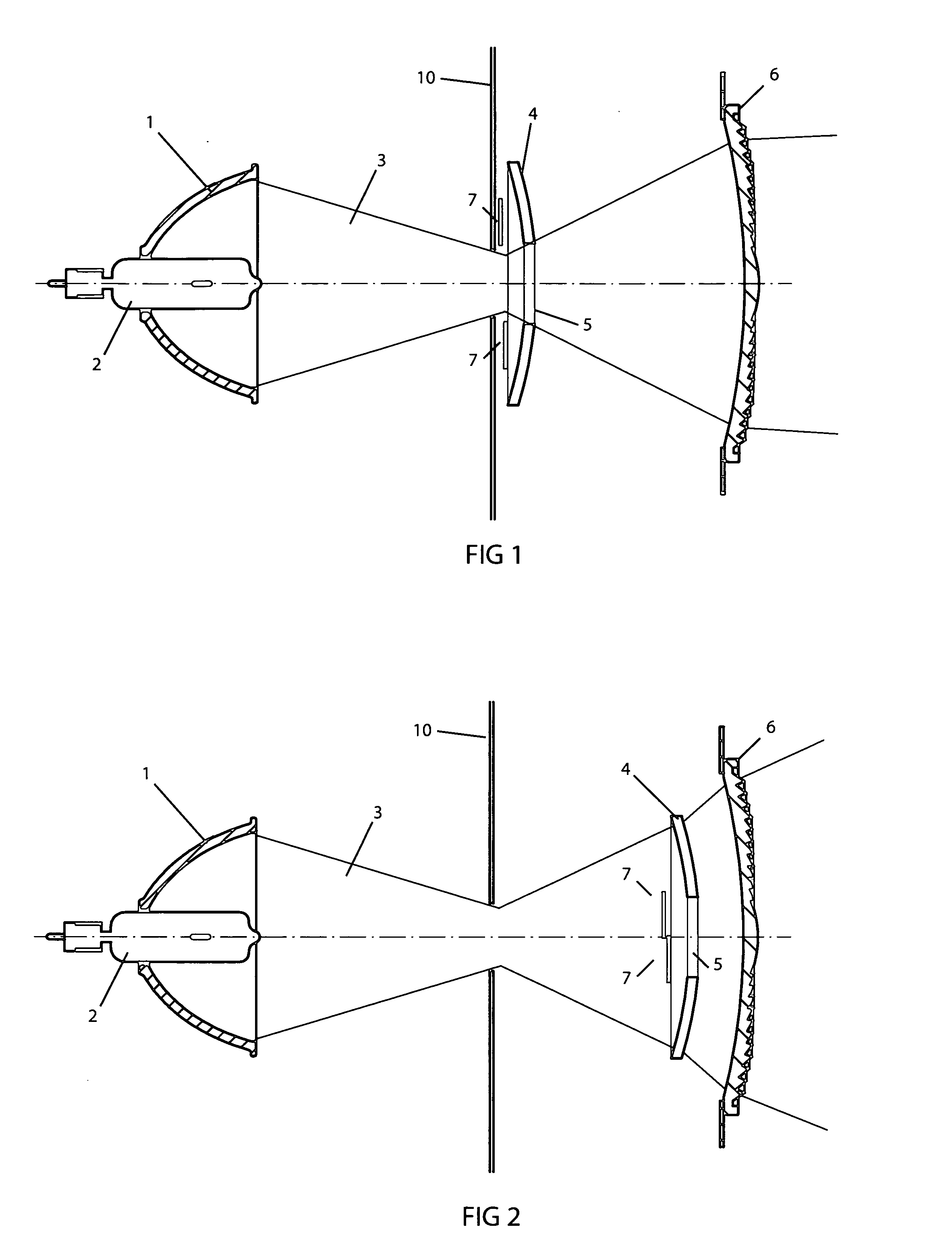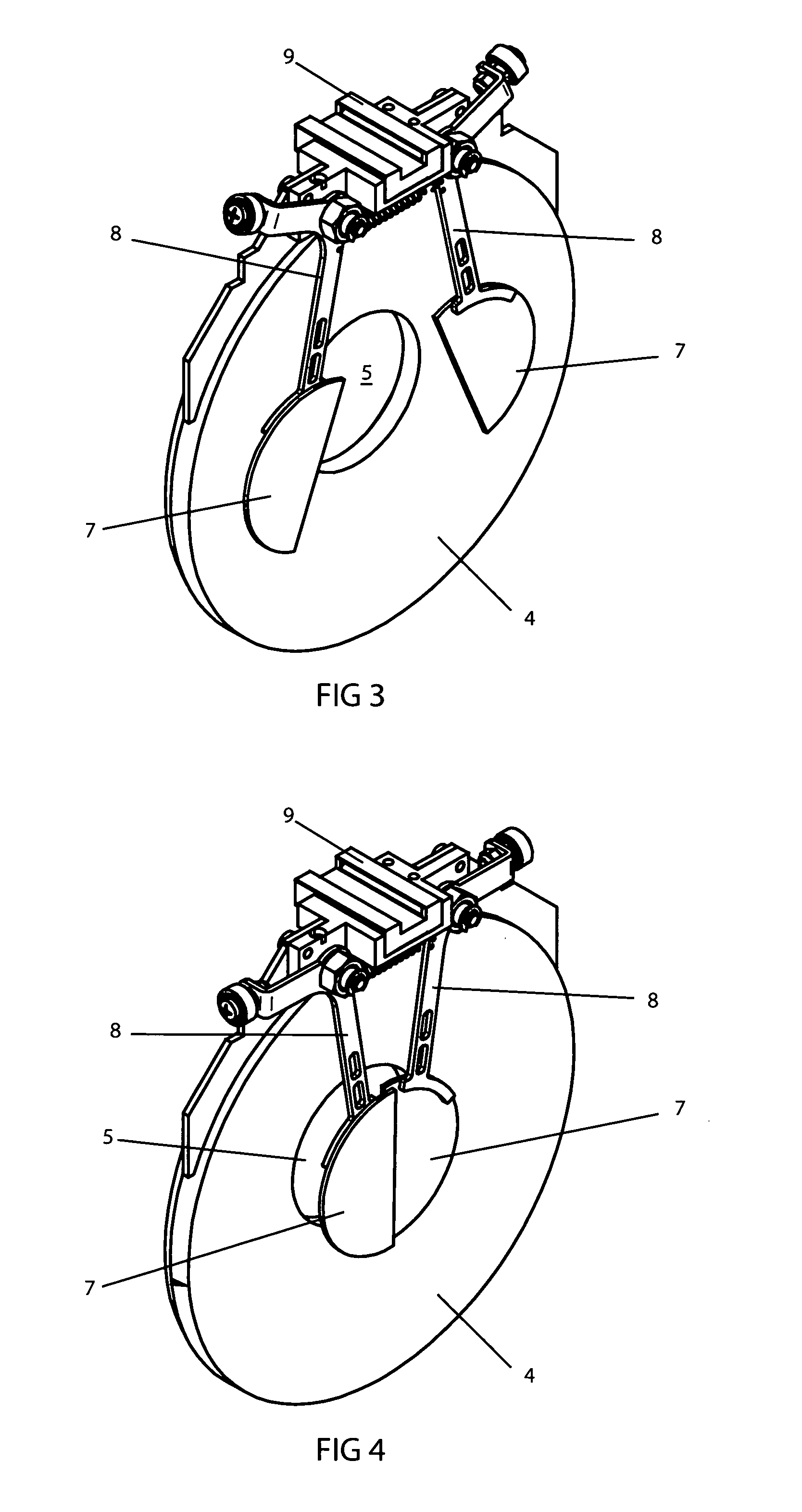Optical system for a wash light
a technology of optical systems and wash lights, applied in optics, lighting devices, instruments, etc., can solve the problems of high efficiency of systems, undesirable high and high beam intensity of systems, so as to avoid excessive intensity in the beam centre and avoid intensity loss
- Summary
- Abstract
- Description
- Claims
- Application Information
AI Technical Summary
Benefits of technology
Problems solved by technology
Method used
Image
Examples
Embodiment Construction
[0022]Preferred embodiments of the present invention are illustrated in the FIGUREs, like numerals being used to refer to like and corresponding parts of the various drawings.
[0023]The present invention generally relates to an optical system for a luminaire for producing a light beam. The optical system is particularly used for a category of luminaire known as a wash light and specifically to a variable beam angle wash light which provides an improved range of beam angles balanced with size and efficient light output.
[0024]FIG. 1 illustrates a plan view along the optical axis of the optical path of an embodiment of the present invention. In FIG. 1 the optical elements are shown in a configuration which provides for minimum beam divergence (a narrow beam angle). The embodiment illustrated in FIG. 1, including the lamp, employs the use of six optical elements. The first element, a lamp 2, provides the light source which is positioned close to the first focus of elliptical reflector 1,...
PUM
 Login to View More
Login to View More Abstract
Description
Claims
Application Information
 Login to View More
Login to View More - R&D
- Intellectual Property
- Life Sciences
- Materials
- Tech Scout
- Unparalleled Data Quality
- Higher Quality Content
- 60% Fewer Hallucinations
Browse by: Latest US Patents, China's latest patents, Technical Efficacy Thesaurus, Application Domain, Technology Topic, Popular Technical Reports.
© 2025 PatSnap. All rights reserved.Legal|Privacy policy|Modern Slavery Act Transparency Statement|Sitemap|About US| Contact US: help@patsnap.com



